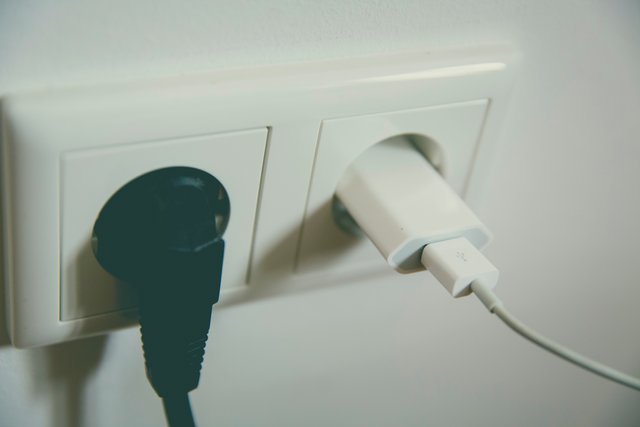Treatment of electric shock

Electric shock in children often occurs suddenly by accidentally touching the source of electricity causing the current to pass through the body. Depending on the voltage and duration of exposure, electric shocks can cause slight shocks or serious injuries that can lead to death. How to deal with electric shock? Let's find out!
What are the causes of electrocution?
Toddlers, especially toddlers, are often electrocuted when they bite into a wire or poke a metal object such as a knife or fork into an unprotected electrical outlet or other electrical devices. These injuries can also occur when the electronic toys, household items, or tools are used improperly; Or when the current is in contact with the water where the child is sitting or standing.
Thunder accounts for about 20% of electric shocks. Christmas trees and decorative lights are also a danger in the Christmas season.
The damage caused by electricity is dependent on many factors, such as the type of AC or DC, the strength of the current (measured by the source and associated wires) and The conductor passes through the body.
Symptoms when the child is electrocuted
In the event of an electric shock, the child may have very little external damage but may be severely burned. Severe burns occur at the point of contact of the power source and the ground. Hand, heel, and head are the most common contact points.
In addition to burns, there may be other injuries, such as complete muscle wasting, hand or foot pain or partial body deformity, or there may be special internal injuries such as shortness of breath, chest pain, pain stomach.
In children, the typical effects of electric shock may be from babies who bite the cord causing burns to the lips.
The baby is electrocuted, how will the doctor diagnose?
Doctors are concerned about whether the electric shock affects the child's muscles, heart and brain, and also whether other bones or organs in the body are affected by the source. push-ups or burns.
Your doctor may use different test methods based on physical tests and time of exposure to the current, including whether or not the following methods are available:
Electrocardiogram (ECG, EKG) for heart examination
CBC method - whole blood cell count
Urine test to check muscle enzymes (helps to check for major muscle damage)
X-rays to check for cracks and dislocations, caused by electric shock
CT scan.
Treatment mode
If there are no symptoms of electrocution, there may be no need for medical treatment. However, if there is a high voltage shock, lightning, shock with burns or other pain, should be evaluated urgently by healthcare professionals.
In addition, the doctor should evaluate the child's oral burns caused by the cord.
Burn treatment:
Minor burns can be treated by applying topical antibiotics and bandages.
Severe burns may require wound or graft surgery.
Severe burns on the hands, feet or hands may require surgery to remove the injured area, or even remove the burned area.
Other injuries requiring treatment:
Eye injuries need to be monitored and treated by specialist eye doctors.
Broken bones must use braces, cast bone or surgery to stabilize the bones.
Intracranial lesions need to be monitored or surgically treated.
Prevention of electric shocks
Parents need to know how to deal with episodes of electrocution to avoid unfortunate risks. If children are exposed to electricity, you need to quickly disconnect the power. In many cases, you can unplug or turn off the power switch.
If not, try to remove the active wires but do not use the bare hands (bare hands make you directly contact the electrical current). You can cut the cord with a wooden handle or handle that is well insulated, or remove the wire from the baby using a dry tree, magazines or newspaper rolled up, a rope, a jacket, or any thick, dry, non-conductive object. At the same time, pull the baby out with the above-insulated items.
As soon as the electricity is turned off (or the child has been pulled out of the electrical line), check the child's breath, skin color, and reactivity. If your child's breathing or heart rate stops, or if they appear to be rapid, abnormal, parents should immediately apply CPR for first aid, and quickly call a rescue car. injured. At the same time, avoid moving your baby if you do not need it because a severe electrical shock can cause fractures.
If your child is conscious and does not seem to be serious, check with your skin doctor, especially if the contact point is the mouth.
Childhood eclampsia can cause organ damage, which can be difficult to detect without a medical examination. Therefore, all children with severe shock should see a doctor.
The pediatrician will clean and bandage minor burns from the power supply. Your doctor may order tests to check for signs of organ damage. If your child has severe burns or any signs of a brain or heart injury, he or she will need to be hospitalized.
Prevention measures to prevent electrocution:
Use a power outlet with a lid.
Ensure all electrical wires are properly insulated.
Keep the cord out of the reach of children and be supervised by an adult when the child is in an area at risk of electric shock.
Notice the electrical equipment around the bath, sink, or pool.

Great Post. I like it.